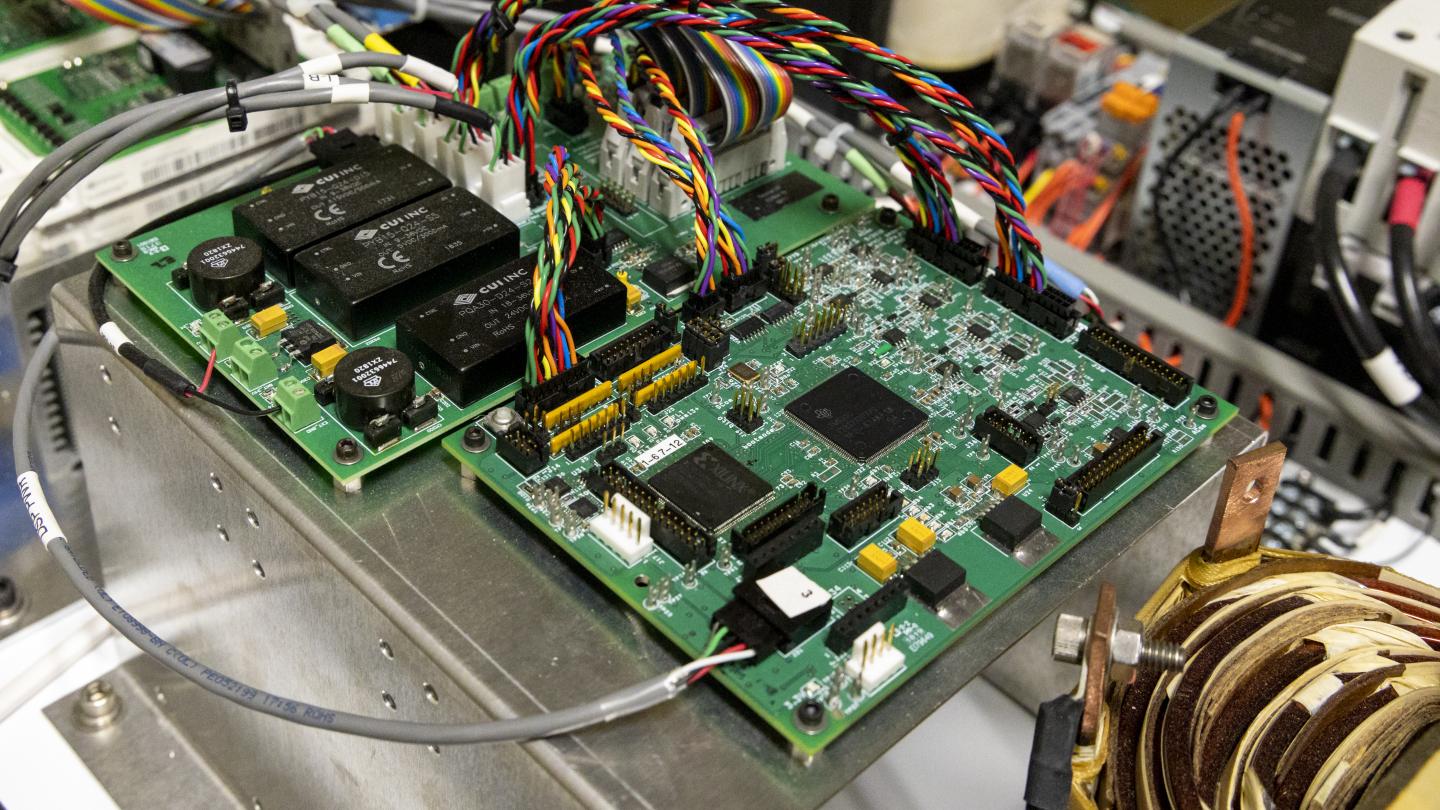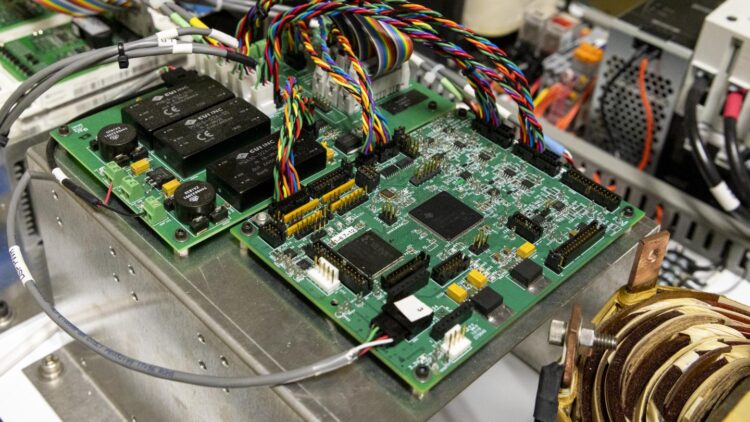
Credit: Carlos Jones, Oak Ridge National Laboratory, U.S. Dept. of Energy
Oak Ridge National Laboratory researchers have developed an intelligent power electronic inverter platform that can connect locally sited energy resources such as solar panels, energy storage and electric vehicles and smoothly interact with the utility power grid.
Inverters convert electricity from the direct current generated by power sources to the alternating current used in homes and the electric grid. Today’s inverters face additional challenges — matching power supply to consumer loads and serving as the primary source of energy conversion between increasingly popular, but intermittent sources of electricity from renewable sources like solar and wind, and connecting to onsite energy storage, EVs and smart appliances. The hybrid inverter platform can do all this while interacting with the larger power grid.
ORNL researchers embedded computing capability in the hybrid inverter platform, supporting real-time communication and decision-making between various control systems and the power electronics-based inverter hardware. The platform, using open-source software, is designed to work universally with any control system — what the industry refers to as plug-and-play.
The research is detailed in a publication titled, “Agent-Based Framework for Supporting Behind the Meter Transactive Power Electronic Systems,” which was presented at the IEEE 2020 IEEE Power & Energy Society Innovative Smart Grid Technologies Conference.
“Every one of the companies offering solar power, smart appliances, EVs and so on typically have a different control system for their products. What we want to create is a way to integrate all these systems using a common platform and create a smoothly functioning, autonomous, distributed energy system,” said Madhu Chinthavali, who leads ORNL’s Electric Energy Systems Integration group. The platform encourages the installation of clean, energy efficient distributed resources while minimizing the expense of multiple pieces of equipment in a home, he added.
The research enables a smart grid — a system that functions autonomously with real-time monitoring and instantaneous power management for better system stability and resilience to disruption.
The platform started with the VOLTTRON open-source software created by Pacific Northwest National Laboratory with funding from the U.S. Department of Energy’s (DOE) Building Technologies Office (BTO). ORNL scientists then built a new software agent that can communicate among various control systems down to the power electronics-driven inverter hardware.
“We made our own component-level hardware, and that’s a strength we bring to the table,” Chinthavali said. “We designed from the bottom up, creating our own platform from scratch to consider the ramifications of system controls down to the switch. This helps us design an overall better integrated system.”
The project is supported by DOE’s BTO and Office of Electricity programs through the Grid Modernization Laboratory Consortium (GMLC). GMLC brings together national lab resources with DOE program offices such as to modernize the nation’s power grid.
Next for the technology is scaling up to higher voltage systems. While homes operate on 120 volts, expanding the platform to 240 volts and then to 480 volts enables use in a commercial setting such as a factory. By scaling the technology further, up to 13.8 kilovolts, the researchers can accommodate medium-voltage applications on the larger, bulk power grid system.
That scaleup work under the GMLC Medium-Voltage Hub will be performed at ORNL’s Grid Research Integration and Deployment Center. The GRID-C research facility is dedicated to the development and evaluation of advanced components for a secure and resilient power grid, including the creation of scalable power electronics devices and controls to support an autonomously functioning grid.
“Autonomous systems for the grid can be likened to the evolution of the auto industry,” Chinthavali said. “The shift from manual to automatic transmission enabled a system that requires less effort by operators, particularly in congested areas. Today, that automatic gear system is supporting the move to autonomous vehicles. The hybrid inverter platform is a similar building block for the smart, autonomous grid of the future.”
Other researchers working on the project include Michael Starke, Steven Campbell, Rong Zeng, Sheng Zheng, Mitch Smith, and Teja Kuruganti, all of ORNL.
ORNL is managed by UT-Battelle for the U.S. Department of Energy’s Office of Science, the single largest supporter of basic research in the physical sciences in the United States. DOE’s Office of Science is working to address some of the most pressing challenges of our time. For more information, please visit https:/
###
Media Contact
Stephanie Seay
[email protected]
Original Source
https:/
Related Journal Article
http://dx.





